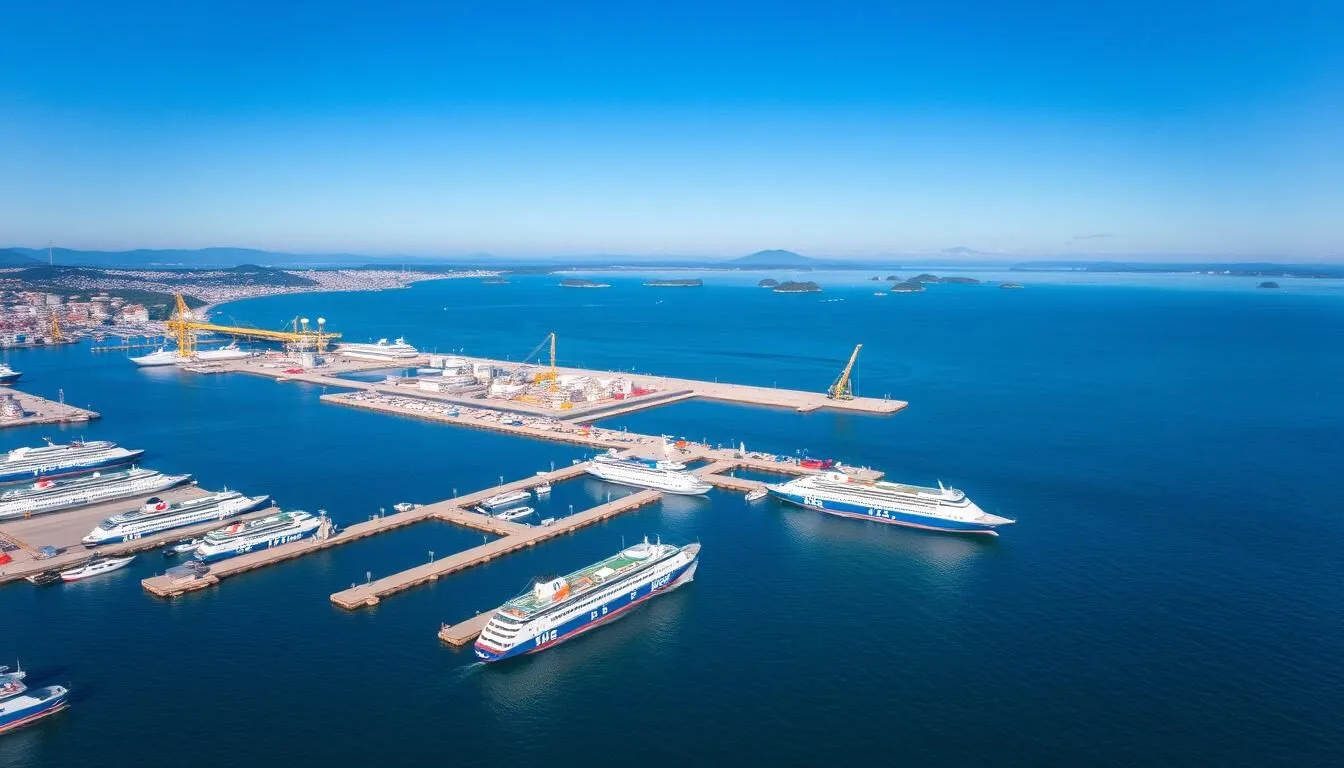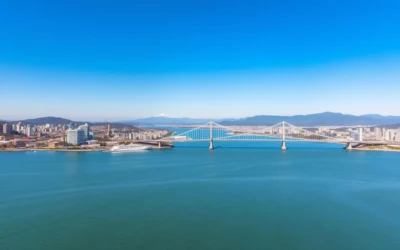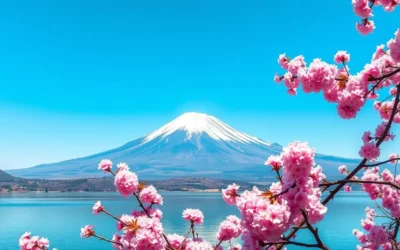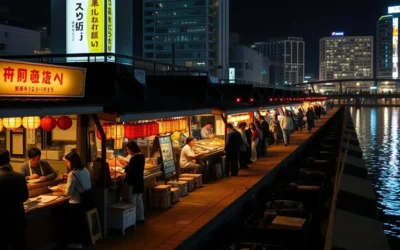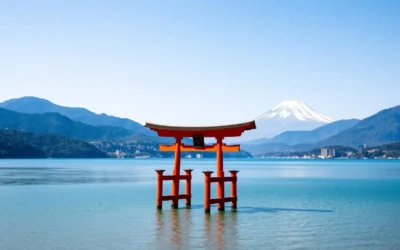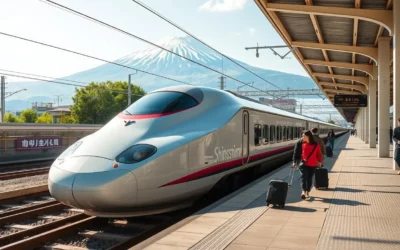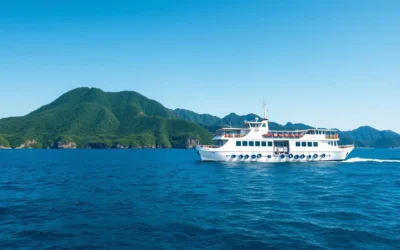✓ Accommodations✓ Flights✓ Rental Cars✓ Tours & Activities
Did you know that Takamatsu is home to Ritsurin Garden, one of Japan’s most exquisite landscape gardens, which took over 100 years to complete and features 6 ponds and 13 artificial hills? Often called the “Gateway to Shikoku,” this charming port city offers a perfect blend of historical sites, natural beauty, and culinary delights that remain surprisingly uncrowded compared to Japan’s more famous destinations.
Getting to Takamatsu
Takamatsu serves as a major transportation hub for Shikoku Island, making it easily accessible from various parts of Japan. Whether you’re coming from Tokyo, Osaka, or other major cities, there are several convenient ways to reach this coastal gem.
Takamatsu Port serves as a gateway to Shikoku and the islands of the Seto Inland Sea
By Air
Takamatsu Airport (TAK) offers domestic flights from Tokyo’s Haneda Airport (approximately 1 hour 20 minutes) and Narita Airport, as well as from Okinawa and other major Japanese cities. From the airport, you can take a limousine bus to Takamatsu Station, which takes about 40 minutes.
By Train
The JR Seto-Ohashi Line connects Takamatsu with Okayama on Honshu Island. From Okayama, you can access the Shinkansen (bullet train) network to reach major cities like Tokyo, Osaka, and Kyoto. The journey from Okayama to Takamatsu takes approximately 1 hour.
By Ferry
Ferries connect Takamatsu with various destinations, including Naoshima and other art islands in the Seto Inland Sea. There are also ferry services from Kobe and Osaka to Takamatsu, offering a scenic alternative to train travel.
Ready to Book Your Trip to Takamatsu?
Find the best flight deals to start your Takamatsu adventure!
Best Time to Visit Takamatsu
Takamatsu enjoys a relatively mild climate throughout the year, making it a pleasant destination in any season. However, certain times offer unique experiences that might align better with your travel preferences.
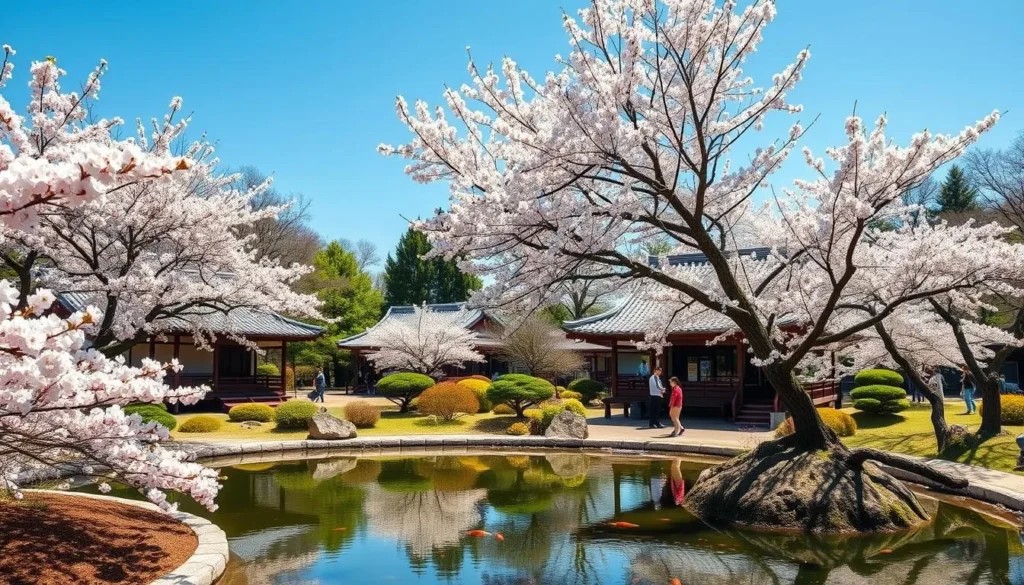
Spring brings cherry blossoms to Takamatsu’s parks and gardens
Spring (March to May)
Spring is arguably the most beautiful time to visit Takamatsu. Cherry blossoms typically bloom in late March to early April, transforming Ritsurin Garden and other parks into pink wonderlands. The comfortable temperatures (averaging 15-20°C/59-68°F) and low rainfall make it ideal for sightseeing.
Summer (June to August)
Summers are warm and humid, with temperatures ranging from 25-30°C (77-86°F). This is a great time to explore the islands of the Seto Inland Sea or attend the Sanuki Takamatsu Festival in August, one of Shikoku’s largest summer festivals featuring impressive fireworks displays over the harbor.
Autumn (September to November)
Fall brings comfortable temperatures and stunning foliage. Ritsurin Garden is particularly magnificent in November when the maple trees turn vibrant shades of red and orange. The garden also hosts special evening illuminations during this season, creating a magical atmosphere.
Winter (December to February)
Winters are mild compared to much of Japan, with temperatures rarely dropping below freezing. While some attractions may have reduced hours, the benefit is fewer tourists. This is also an excellent time to enjoy hot Sanuki udon noodles, a local specialty that’s especially comforting in cooler weather.
Getting Around Takamatsu
Takamatsu is a relatively compact city with an efficient public transportation system, making it easy to navigate even for first-time visitors. Here are the best ways to get around:
Public Transportation
The Kotoden Railway (Takamatsu-Kotohira Electric Railroad) is a convenient way to reach many attractions. The network consists of three lines: Kotohira Line, Nagao Line, and Shido Line. One-day passes are available for unlimited rides.
City buses operated by Kotoden Bus and JR Shikoku Bus cover routes throughout Takamatsu. The Kotoden Bus Information Center at Takamatsu Station provides maps and schedules in English.
Rental Cars
If you plan to explore the countryside or visit multiple destinations across Shikoku, renting a car offers the most flexibility. Several rental agencies have offices near Takamatsu Station and at the airport.
Explore Takamatsu at Your Own Pace
Rent a car to discover hidden gems around Takamatsu and Shikoku Island.
Bicycles
Takamatsu is relatively flat, making cycling a pleasant option for exploring the city. Bicycle rental services are available at Takamatsu Station and other locations throughout the city. The Takamatsu City Bicycle Rental service offers bikes for 200 yen per day with a 1,000 yen deposit.
Taxis
Taxis are readily available at Takamatsu Station, major hotels, and tourist attractions. They’re a convenient option for shorter trips or when carrying luggage. Most drivers don’t speak English, so it’s helpful to have your destination written in Japanese.
Where to Stay in Takamatsu
Takamatsu offers a range of accommodation options to suit different budgets and preferences. Here are the best areas to stay and some recommended properties:
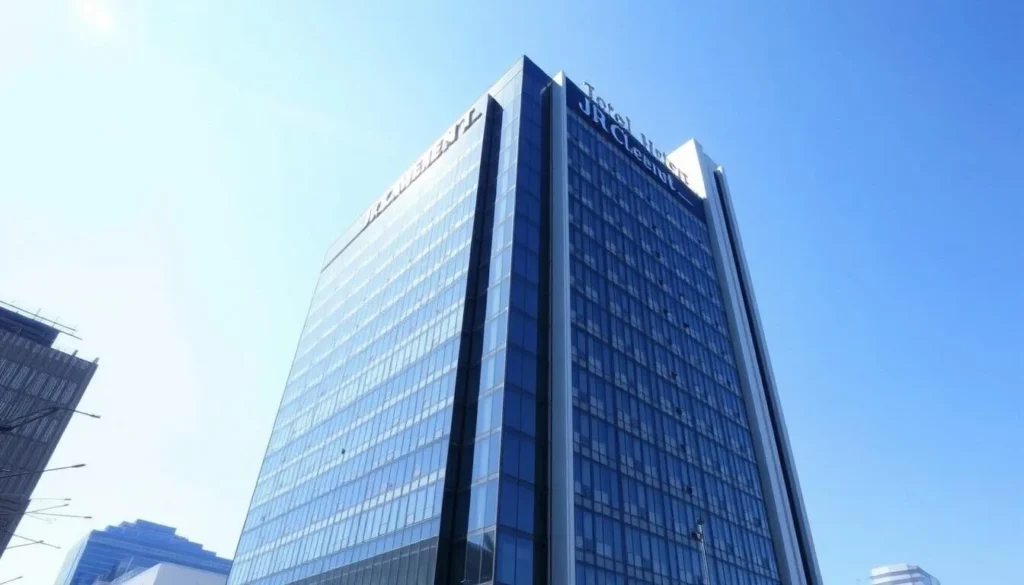
JR Hotel Clement Takamatsu offers convenient access to transportation and stunning city views
Near Takamatsu Station
Staying near the station provides excellent access to transportation and is ideal for travelers planning day trips to other parts of Shikoku or the art islands.
JR Hotel Clement Takamatsu
Connected directly to JR Takamatsu Station, this upscale hotel offers panoramic views of the Seto Inland Sea and the city. Rooms are spacious and modern, and the hotel features multiple restaurants serving local and international cuisine.
City Center
Takamatsu’s downtown area puts you within walking distance of shopping streets, restaurants, and attractions like Takamatsu Castle Park.
Dormy Inn Takamatsu
This comfortable business hotel is known for its excellent public bath facilities, including an open-air bath and sauna. A free ramen service is offered in the evenings, and the hotel is conveniently located near shopping areas and restaurants.
Near Ritsurin Garden
Staying near Ritsurin Garden allows for early morning visits to this beautiful attraction before the crowds arrive.
Takamatsu Tokyu REI Hotel
Located between Takamatsu Station and Ritsurin Garden, this modern hotel offers comfortable rooms and a convenient location for exploring the city’s attractions. The hotel provides bicycle rentals, making it easy to visit nearby sites.
Find Your Perfect Stay in Takamatsu
Browse a wide selection of hotels, ryokans, and guesthouses to suit your budget and preferences.
Top Attractions in Takamatsu Japan: Best Things to Do
Takamatsu offers a perfect blend of historical sites, natural beauty, and cultural experiences. Here are the must-visit attractions that should be on every traveler’s itinerary:
1. Ritsurin Garden
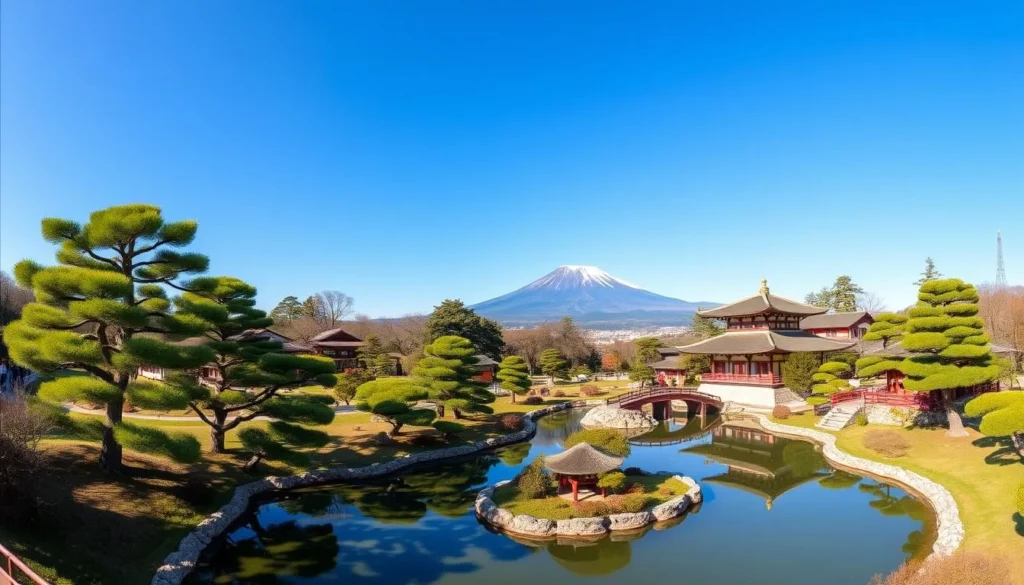
Ritsurin Garden is considered one of Japan’s most beautiful landscape gardens
Ritsurin Garden is the crown jewel of Takamatsu and one of Japan’s most exquisite landscape gardens. Constructed by feudal lords over a period of 100 years and completed in the early Edo period, this sprawling garden spans 75 hectares and features six ponds and thirteen artificial hills.
The garden is designed as a walking garden, offering different scenic views with each step. Highlights include the Kikugetsu-tei teahouse, where you can enjoy traditional green tea and Japanese sweets while overlooking the central pond, and the meticulously pruned pine trees, some of which are over 300 years old.
Visitor Information:
Opening hours: 7:00 AM to 5:00 PM (extended during special illumination events)
Admission: 410 yen for adults
Access: 10-minute walk from JR Ritsurin Koen Kitaguchi Station or 3-minute walk from Kotoden Ritsurin Koen Station
Experience Ritsurin Garden with a Local Guide
Discover the hidden meanings and historical significance of this magnificent garden with an expert guide.
Book a Guided Tour
2. Takamatsu Castle (Tamamo Park)

Takamatsu Castle is one of Japan’s rare “water castles” with a moat connected to the sea
Takamatsu Castle, also known as Tamamo Castle, is one of Japan’s few “water castles” with a moat connected directly to the sea. Built in 1590, the castle was home to the Matsudaira clan for 11 generations. While the main tower was dismantled in 1884, several important structures remain, including the Mizutegomon Gate and three turrets that have been designated as Important Cultural Properties.
The castle grounds now form Tamamo Park, a pleasant space for strolling with beautiful views of the Seto Inland Sea. The seawater moat is home to numerous fish, and visitors can purchase food to feed them. The Hiunkaku building houses historical exhibits about the castle and the feudal period.
Visitor Information:
Opening hours: 9:00 AM to 4:30 PM (closed December 29-31)
Admission: 200 yen for adults
Access: 10-minute walk from JR Takamatsu Station
3. Mt. Yashima
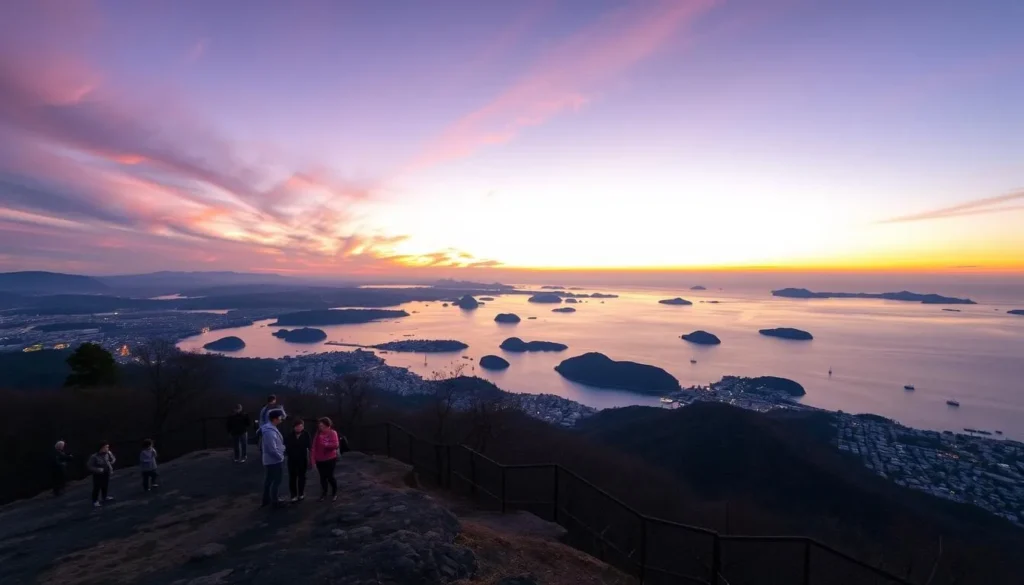
Mt. Yashima offers spectacular panoramic views of the Seto Inland Sea
Mt. Yashima is a flat-topped mountain extending into the Seto Inland Sea, offering some of the most spectacular views in the region. This historic site was the battlefield for the famous Genpei War in 1185 and is now part of the Setonaikai National Park.
The mountain plateau is home to Yashima Temple, an important stop on the Shikoku 88 Temple Pilgrimage, as well as the Yashima Folklore Museum and an aquarium. The observatory at the mountain’s edge provides panoramic views of Takamatsu city and the islands of the Seto Inland Sea, earning it a place among Japan’s “Top 100 Sunset Views.”
Visitor Information:
Access: Take the Kotoden Shido Line to Yashima Station, then a bus to the top (or a 40-minute hike)
Parking fee: 300 yen
Best time to visit: Late afternoon for sunset views
4. Shikoku Mura (Shikoku Village)
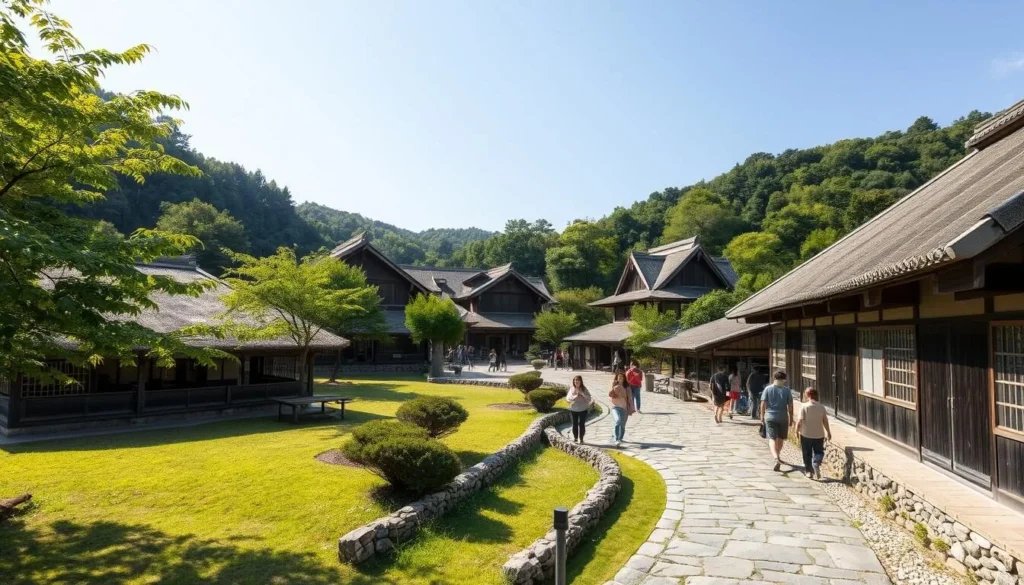
Shikoku Mura preserves traditional buildings from across Shikoku Island
Shikoku Mura is an open-air architectural museum showcasing traditional buildings from the Edo to Taisho periods (17th to early 20th centuries). Located at the base of Mt. Yashima, this living museum features over 20 meticulously preserved structures that have been relocated from various parts of Shikoku Island.
Highlights include a thatched-roof farmhouse, a kabuki stage, a vine suspension bridge, and various workshops where traditional crafts were practiced. The museum provides insight into rural life in pre-modern Japan and the unique architectural styles of the region. The adjacent Shikoku Mura Gallery, designed by renowned architect Tadao Ando, houses contemporary art exhibitions.
Visitor Information:
Opening hours: 8:30 AM to 5:00 PM (March to October), 8:30 AM to 4:30 PM (November to February)
Admission: 1,000 yen for adults
Access: Take the Kotoden Shido Line to Yashima Station, then a 5-minute taxi ride
5. Isamu Noguchi Garden Museum
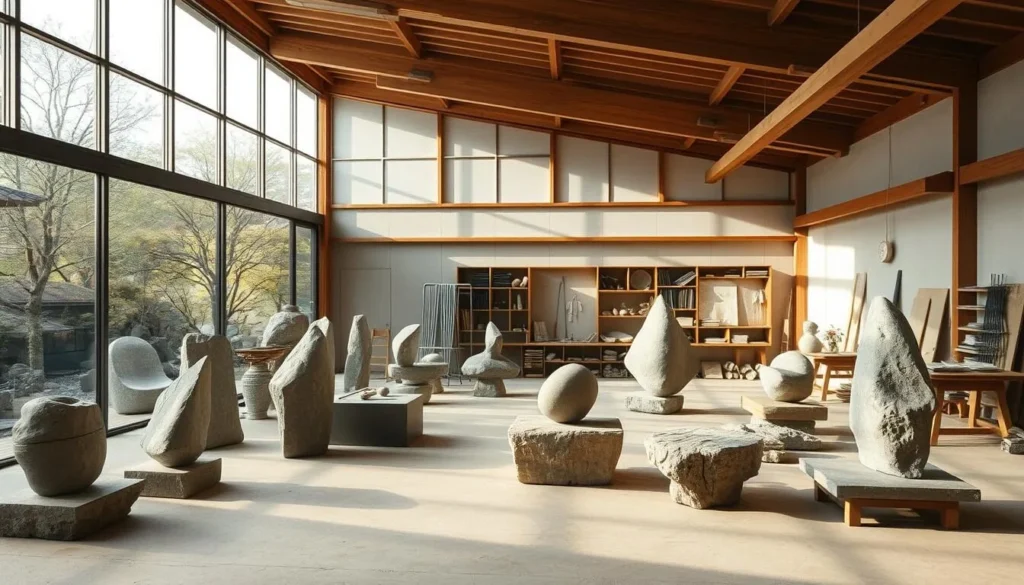
The Isamu Noguchi Garden Museum preserves the artist’s studio and sculptures
The Isamu Noguchi Garden Museum preserves the studio and workspace of the renowned Japanese-American sculptor Isamu Noguchi. Located in the Mure area of Takamatsu, the museum offers a unique glimpse into the artist’s creative process and his connection to the stone-working traditions of the region.
The museum complex includes Noguchi’s former studio, a stone garden featuring his completed and in-progress sculptures, and his modest living quarters. The peaceful setting allows visitors to appreciate Noguchi’s artistic vision and his unique approach to working with stone. Many of the sculptures remain exactly as Noguchi left them when he passed away in 1988.
Visitor Information:
Opening hours: Tuesday, Thursday, and Saturday at 10:00 AM, 1:00 PM, and 3:00 PM (by reservation only)
Admission: 2,200 yen for adults
Access: Take the Kotoden Shido Line to Yakuri Station, then a bus to Mure
Reservation Required: The Isamu Noguchi Garden Museum requires advance reservations, which can be made through their official website. Tours are conducted in small groups and often sell out weeks in advance, especially during peak travel seasons.
Island Hopping in the Seto Inland Sea
One of the highlights of visiting Takamatsu is the opportunity to explore the picturesque islands of the Seto Inland Sea. These islands offer a blend of art, nature, and traditional Japanese culture.
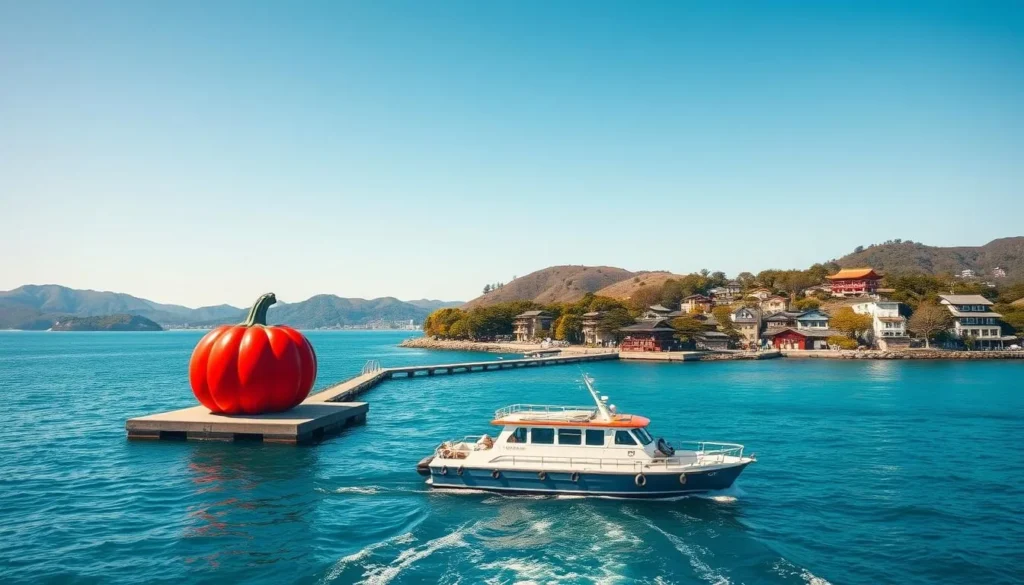
Regular ferries connect Takamatsu with the art islands of the Seto Inland Sea
Naoshima
Naoshima has transformed from a sleepy fishing island to a world-renowned art destination. The island is home to several museums designed by architect Tadao Ando, including the Chichu Art Museum, which houses works by Claude Monet, James Turrell, and Walter De Maria in a stunning underground facility.
Other highlights include the Benesse House Museum, outdoor art installations scattered throughout the island, and the Art House Project, which converts traditional houses into art spaces. Don’t miss Yayoi Kusama’s iconic yellow pumpkin sculpture at the Miyanoura Port.
Visitor Information:
Access: 50-minute ferry from Takamatsu Port to Miyanoura Port
Ferry cost: Approximately 520 yen one-way
Best explored by: Rental bicycle or on foot
Discover the Art Islands
Experience the unique blend of contemporary art and natural beauty on Naoshima Island.
Book an Island Tour
Megijima
Megijima is a small island known for its caves, which according to legend, were once home to ogres (oni) from the famous Japanese folktale “Momotaro.” The island is also part of the Setouchi Triennale art festival, featuring various art installations and projects.
The island’s highest point offers panoramic views of the Seto Inland Sea, and its beaches are popular for swimming during summer. With a small population of around 200 people, Megijima provides a glimpse into traditional island life in Japan.
Visitor Information:
Access: 20-minute ferry from Takamatsu Port
Ferry cost: Approximately 370 yen one-way
Oni Cave admission: 500 yen for adults
Ogijima
Ogijima is characterized by its steep, narrow streets lined with traditional houses that climb up the hillside from the port. The island has become a hub for art installations as part of the Setouchi Triennale, with many works integrated into the village landscape.
The island’s lighthouse offers spectacular views, and the small community has experienced a revitalization through art projects and new residents drawn to its creative atmosphere. Ogijima’s compact size makes it perfect for exploring on foot.
Visitor Information:
Access: 40-minute ferry from Takamatsu Port (often combined with Megijima)
Ferry cost: Approximately 510 yen one-way
Best time to visit: During the Setouchi Triennale art festival (held every three years)
Food Experiences in Takamatsu
Takamatsu is a food lover’s paradise, particularly famous for its Sanuki udon noodles. The city offers numerous culinary experiences that showcase the region’s fresh ingredients and traditional cooking methods.
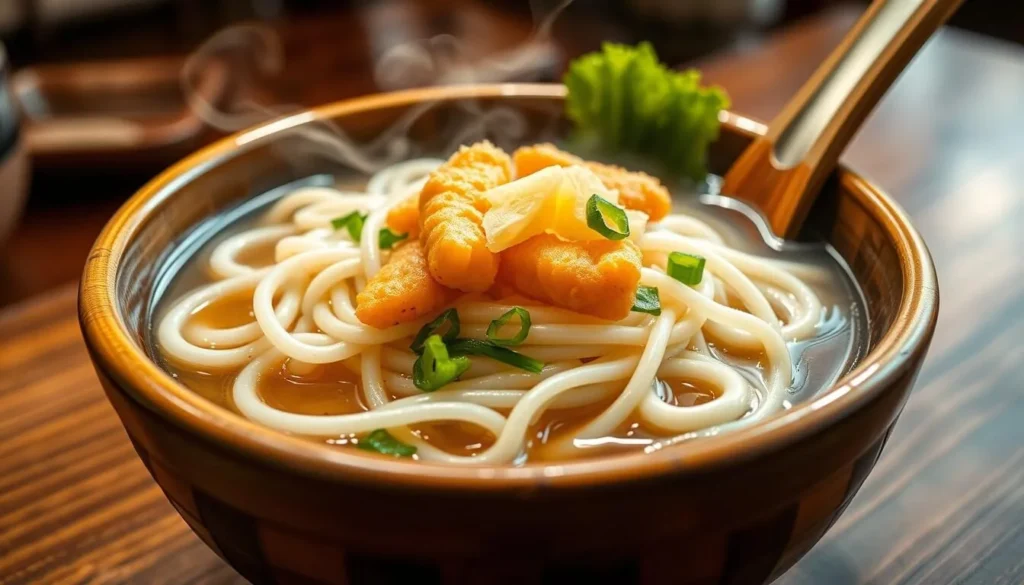
Sanuki udon, characterized by its firm, chewy texture, is Takamatsu’s most famous culinary specialty
Sanuki Udon
Kagawa Prefecture, where Takamatsu is located, is often called “Udon Prefecture” due to its famous Sanuki udon noodles. These thick, square-cut noodles are known for their firm, chewy texture and are typically served either hot in a light dashi broth (kakeudon) or cold with a dipping sauce (zaru udon).
There are approximately 700 udon restaurants in Kagawa Prefecture, ranging from traditional establishments to modern chains. Many locals start their day with a bowl of udon for breakfast, demonstrating the noodle’s importance in the local food culture.
Top Udon Restaurants in Takamatsu
Udon Baka Ichidai
This popular restaurant is known for its handmade noodles cut to order and unique offerings like kama butter udon, which features a rich, carbonara-like sauce. Expect a line during peak hours, but the wait is worth it for the exceptional quality.
Address: 2-6-7 Kawaramachi, Takamatsu
Udon Honjin Yamadaya
Set in a historic building designated as a Tangible Cultural Property, this restaurant offers authentic Sanuki udon prepared using traditional techniques. The spacious garden setting creates a peaceful atmosphere for enjoying your meal.
Address: 2-1-6 Bancho, Takamatsu
Waraya
Housed in a reconstructed Japanese folk house with a thatched roof and water wheel, Waraya offers a traditional dining experience. Their udon is made with the highest quality flour and a secret broth recipe passed down through generations.
Address: 387-6 Shioya-cho, Takamatsu
Udon Making Experience
For a hands-on culinary adventure, consider taking an udon making class. Several facilities in Takamatsu offer workshops where you can learn the traditional techniques of kneading, rolling, and cutting Sanuki udon.
Nakano Udon School
This popular cooking school offers English-friendly udon making classes where participants learn the entire process from mixing the dough to cutting the noodles. The best part? You get to eat your freshly made udon at the end of the class!
Address: 4-1 Tabuchi-cho, Takamatsu
Duration: Approximately 90 minutes
Cost: 1,600 yen per person
Other Local Specialties
While udon dominates the local food scene, Takamatsu offers other culinary delights worth trying:
Olive-Fed Wagyu Beef
Kagawa Prefecture is known for its olive production, and some local cattle are fed olive pulp, resulting in exceptionally tender and flavorful beef. Look for “olive-fed wagyu” on restaurant menus for a unique dining experience.
Wasanbon Sugar
This high-grade, fine-grained sugar is produced in the region using traditional methods. It’s used in Japanese confectionery and makes for an excellent souvenir. Visit Mamehana in the Marugame-machi shopping arcade to sample sweets made with this special sugar.
Shopping in Takamatsu
From traditional crafts to modern shopping malls, Takamatsu offers diverse shopping experiences for visitors. Here are the best places to shop during your stay:
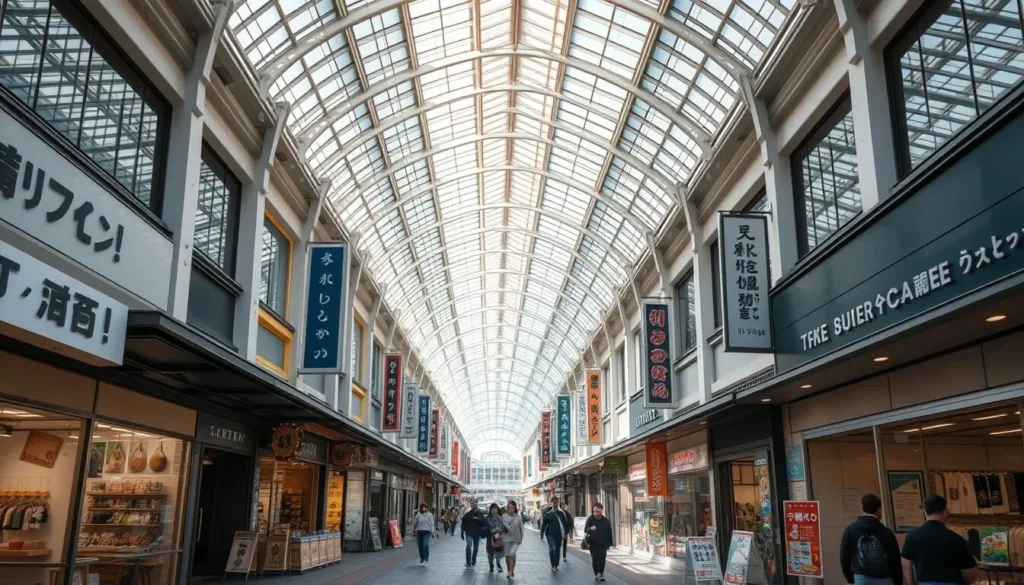
The covered Marugame-machi Shopping Street has been a commercial hub for over 400 years
Traditional Shopping Areas
Takamatsu Marugame-machi Shopping Street
This historic shopping arcade has a history spanning over 400 years. The 2.7-kilometer covered street features a mix of traditional shops, trendy boutiques, and international brands. The northern end is marked by an impressive dome area inspired by Italy’s Galleria Vittorio Emanuele II.
Don’t miss the side streets branching off from the main arcade, where you’ll find unique local shops and eateries frequented by locals.
Kitahama Alley
Located near the port, this trendy complex is housed in renovated warehouses. The retro-industrial setting is home to stylish cafes, boutiques, art galleries, and craft shops. It’s an excellent place to find unique souvenirs and enjoy a coffee with views of the harbor.
Modern Shopping Centers
Aeon Mall Takamatsu
This large shopping mall houses over 150 stores, including fashion retailers, electronics shops, and a variety of restaurants. The food court on the third floor offers a wide selection of dining options, making it a convenient place to shop and dine.
Youme Town Takamatsu
With approximately 160 stores, this shopping center offers everything from apparel and home goods to electronics. The restaurant area features diverse dining options, and there are plenty of rest spaces throughout the mall.
Souvenirs from Takamatsu
Looking for the perfect memento of your trip to Takamatsu? Here are some recommended local souvenirs:
Sanuki Udon
Take home shelf-stable packages of authentic Sanuki udon. Sanuki Mengyo’s “Tesage Hansei Udon” is made using traditional techniques and has a long shelf life, making it perfect for sharing with friends and family.
Kawara Senbei
These traditional rice crackers from Kutsuwado are made with high-quality Shirashita sugar and come in various sizes, from small tiles perfect for children to extra-large tiles the size of actual roof tiles.
Wasanbon Sugar
This refined sugar made from locally grown sugarcane has been produced in the region since the Edo period. Mitani Seito Hane Sanuki Honpo, founded in 1804, offers beautifully packaged Wasanbon sugar candies that make elegant gifts.
Seasonal Events and Festivals
Takamatsu hosts various events and festivals throughout the year that showcase the region’s culture and traditions. Here are some highlights to consider when planning your visit:
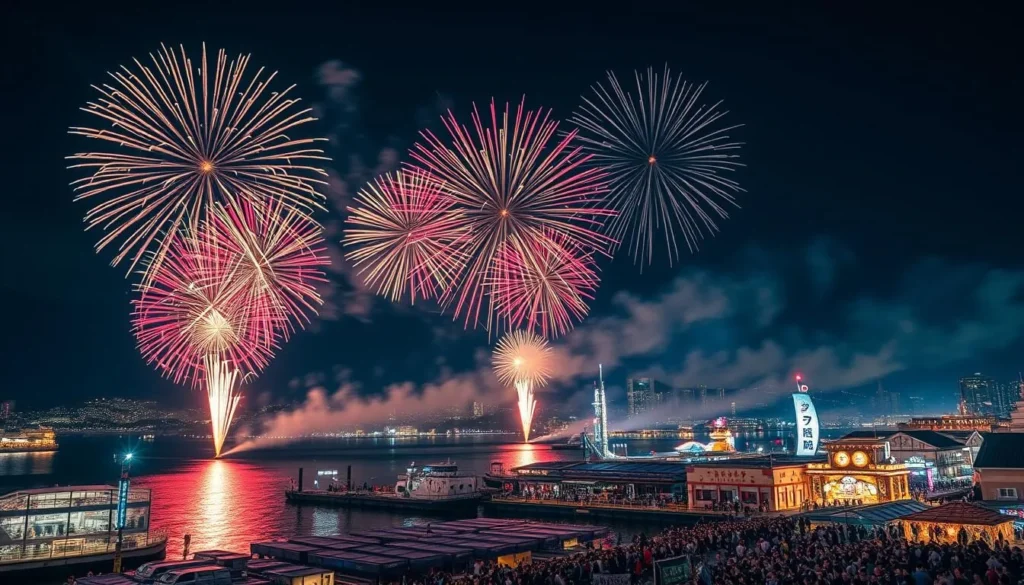
The Sanuki Takamatsu Festival features one of Shikoku’s largest fireworks displays
Sanuki Takamatsu Festival (August)
One of Shikoku’s four major festivals, the Sanuki Takamatsu Festival is held annually from August 12th to 14th. The three-day celebration features a spectacular fireworks display over the sea, traditional dance performances, and the Sanuki Udon Eating Championship. The festival attracts visitors from across Japan and culminates in a group dance where participating teams showcase unique performances.
Ritsurin Garden Autumn Illumination (November)
During the peak autumn foliage season, Ritsurin Garden hosts special evening illuminations that transform the garden into a magical nightscape. The carefully placed lights highlight the vibrant red and orange maple leaves, creating stunning reflections in the garden’s ponds. Visitors can also enjoy traditional Japanese music performances and tea ceremonies during this special event.
Shikoku Pilgrimage Season (Spring and Autumn)
The Shikoku 88 Temple Pilgrimage is a 1,200-kilometer circular route that passes through 88 Buddhist temples across Shikoku Island. While the pilgrimage can be undertaken at any time, spring (April-May) and autumn (October-November) are particularly popular due to the pleasant weather and beautiful scenery. Takamatsu serves as a starting point for many pilgrims, and you’ll likely encounter them in their distinctive white clothing and conical hats.
Setouchi Triennale Art Festival
Held every three years across the islands of the Seto Inland Sea, this international art festival transforms the region into a massive open-air gallery. The festival typically runs during three seasons (spring, summer, and fall) and features works by artists from Japan and around the world. Takamatsu serves as a gateway to the festival, with ferries departing from its port to the various participating islands.
Next Setouchi Triennale: The festival is held every three years, with the next edition scheduled for 2025. Check the official website for specific dates and participating islands.
Day Trips from Takamatsu
Takamatsu’s central location makes it an excellent base for exploring other parts of Shikoku and the Seto Inland Sea. Here are some recommended day trips:
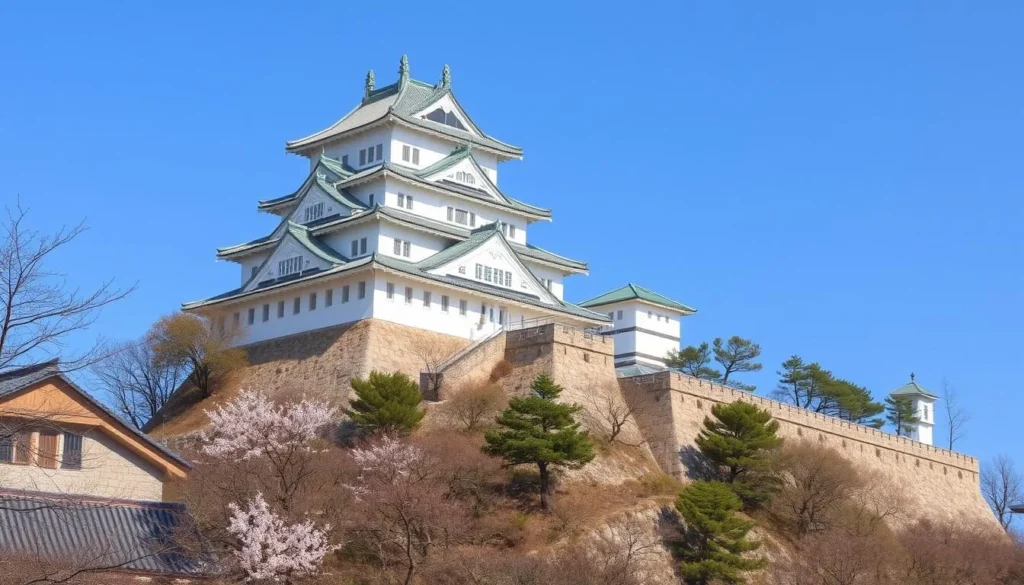
Marugame Castle features some of Japan’s highest castle walls
Marugame
Located about 30 minutes west of Takamatsu by train, Marugame is home to one of Japan’s 12 original castles. Marugame Castle sits atop a hill and features impressive stone walls that are among the highest in Japan. The city is also famous for its udon noodles, with many claiming that the best Sanuki udon can be found here rather than in Takamatsu itself.
Getting There: Take the JR Yosan Line from Takamatsu Station to Marugame Station (approximately 30 minutes).
Kotohira
The small town of Kotohira is famous for Kotohira-gu (also known as Kompira-san), a Shinto shrine dedicated to seafaring. Reaching the main shrine requires climbing 785 stone steps, but the panoramic views and historical architecture make the effort worthwhile. The town also features traditional inns, shops selling pilgrim souvenirs, and Kanamaruza, Japan’s oldest surviving kabuki theater.
Getting There: Take the JR Dosan Line from Takamatsu Station to Kotohira Station (approximately 45 minutes) or the Kotoden train to Kotoden-Kotohira Station.
Explore Beyond Takamatsu
Discover the hidden gems of Shikoku with a guided day trip from Takamatsu.
Browse Day Tours
Iya Valley
For nature lovers, the remote Iya Valley in Tokushima Prefecture offers breathtaking mountain scenery, traditional vine bridges, and hot springs. The area is known for its rugged beauty and traditional thatched-roof houses. Don’t miss the Peeing Boy statue, perched precariously on a cliff edge with stunning valley views.
Getting There: The journey requires a combination of train and bus travel, taking approximately 2-3 hours each way. Consider renting a car for more flexibility.
Kurashiki
Located in neighboring Okayama Prefecture, Kurashiki’s Bikan Historical Quarter features beautifully preserved merchant houses from the Edo period lining a picturesque canal. The area is home to several museums, including the Ohara Museum of Art, Japan’s first Western art museum. The city offers a glimpse into Japan’s past with its white-walled storehouses and willow-lined waterways.
Getting There: Take the JR Marine Liner from Takamatsu to Okayama, then transfer to the JR Sanyo Line to Kurashiki (total journey approximately 1 hour 15 minutes).
Practical Tips for Visiting Takamatsu
To help you make the most of your trip to Takamatsu, here are some practical tips and information:
Language
While English signage is available at major tourist attractions and transportation hubs, English speakers are less common in Takamatsu than in larger Japanese cities. Consider downloading a translation app like Google Translate, which can help with menu translation and basic communication. Learning a few basic Japanese phrases will also be appreciated by locals.
Currency and Payment
The Japanese yen (¥) is the local currency. While credit cards are increasingly accepted at hotels, larger restaurants, and department stores, many smaller establishments, including some udon restaurants, still operate on a cash-only basis. ATMs that accept foreign cards can be found at 7-Eleven convenience stores, post offices, and international airports.
Internet and Connectivity
Free Wi-Fi is available at Takamatsu Station, major tourist attractions, and many hotels and cafes. For continuous connectivity, consider renting a pocket Wi-Fi device or purchasing a Japanese SIM card upon arrival in Japan.
Travel Tip: The “Takamatsu City Free Wi-Fi” service is available at various locations throughout the city, including Takamatsu Station, Ritsurin Garden, and the port area. Look for the designated signs to connect.
Transportation Passes
If you plan to use public transportation frequently, consider these money-saving passes:
Kotoden One-Day Pass
This pass offers unlimited rides on Kotoden trains and buses for one day. It’s particularly useful if you plan to visit multiple attractions within Takamatsu.
Cost: 1,230 yen for adults
Shikoku Rail Pass
If you’re exploring multiple cities across Shikoku, this pass provides unlimited travel on JR trains throughout the island for 3, 4, or 5 consecutive days.
Cost: Starting from 9,000 yen for a 3-day pass
Weather and What to Pack
Takamatsu has a mild climate compared to many parts of Japan, but it’s still important to pack appropriately for the season:
| Season | Temperature Range | What to Pack |
| Spring (Mar-May) | 10-22°C (50-72°F) | Light layers, light jacket, comfortable walking shoes |
| Summer (Jun-Aug) | 22-32°C (72-90°F) | Lightweight clothing, sun protection, rain gear |
| Autumn (Sep-Nov) | 15-28°C (59-82°F) | Light layers, light jacket, comfortable walking shoes |
| Winter (Dec-Feb) | 5-12°C (41-54°F) | Warm clothing, jacket, scarf, gloves |
Local Etiquette
Observing local customs will enhance your experience and show respect for Japanese culture:
Ready to Explore Takamatsu?
Takamatsu offers a perfect blend of traditional Japanese culture, natural beauty, and culinary delights without the crowds of more famous destinations. From the meticulously crafted landscapes of Ritsurin Garden to the chewy perfection of Sanuki udon noodles, this charming port city provides authentic experiences that will leave a lasting impression.
As the gateway to Shikoku and the art islands of the Seto Inland Sea, Takamatsu serves as an ideal base for exploring this less-traveled region of Japan. Whether you’re a history enthusiast, a food lover, an art aficionado, or simply seeking a more relaxed pace of Japanese travel, Takamatsu welcomes you with open arms and countless discoveries.
Start Planning Your Takamatsu Adventure Today!
Find the best deals on flights, accommodations, and experiences to make your Takamatsu journey unforgettable.
—
The above is subject to change.
Check back often to TRAVEL.COM for the latest travel tips and deals.
